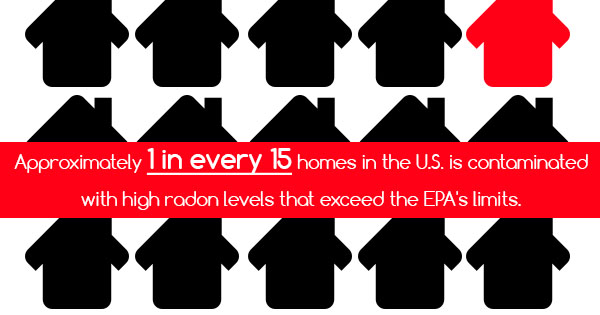
Radon is a naturally occurring gas that is a byproduct of decaying radium. Found in the soil, radon is often a forgotten toxin. It’s a colorless, odorless, and tasteless noble gas that is impossible to recognize without the proper equipment.
During the cold winters, one would think that the frozen ground and layers of snow and ice would prevent radon gas from escaping. However, while the outdoor elements suppress the radon, some areas nevertheless see higher radon levels.
When you’re home, curled up with a book with the heat on, you may feel safer than you would outside. In many ways, you are. But in addition to comfortable warm beverages and blankets, radon can be lurking undetected in your home.
Radon testing and inspection is especially important during the winter months for the following reasons.
- In the winter, warm air rises in the home and escapes to cold air outside. When that air leaves, it needs to be replaced. In the spring and fall, when we still have our doors and windows ajar, drafts help bring in additional air.
However, in the summer and winter, these air sources are closed off, forcing the home to pull air from the soil that it’s built upon.
Through cracks and concrete foundations, as well as gaps left by sump pump installation, crawlspaces, floor drains, and other tunnels connected to the soil, radon-contaminated air can leak up and through your home.
- While radon is able to enter the home through the soil year-round, there are higher concentrations being filtered into the home due to the blanket effect formed by frozen ground. Since the radon is unable to escape, there is more being pulled towards the homes.
- Closed home conditions can also increase radon gas levels in the home, because there is no fresh air to diffuse the contaminated air in the home. Open windows can not only introduce clean air to help replace escaped air, but also diffuse the air that is already contaminated.
On the other hand, however, opening windows can also increase stack effect, allowing mostly clean air to escape, forcing more radon gas into the home through the cracks.
The truth is, in the winter, one can never be too careful. That’s why it is advised to hire a radon abatement service to survey your home and make sure that your radon levels are not dangerously high. Approximately one in every 15 homes in the U.S. is contaminated with high radon levels that exceed the EPA’s limits.
This winter, hire a radon abatement service that you trust. Affordable Radon, LLC serves the greater Denver area with residential radon inspection, mitigation, and radon abatement services.

Recent Comments